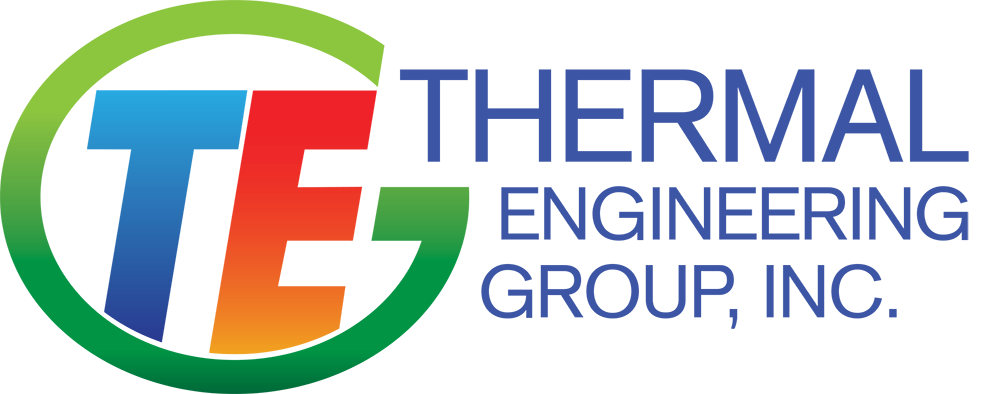Thermal Engineering Group is uniquely qualified to provide a full range of engineering and implementation services for cogeneration systems, from concept-to-commissioning.
For nearly two decades, Thermal Engineering Group has been actively involved in the successful design, development, construction, operation and maintenance of 17 cogeneration and combined cycle projects.
Our primary focus is on small to medium size cogeneration plants with an electrical generating capacity of 5 to 30 MW of electrical output, cooling capacity up to 30,000 tons, and steam production up to 1,000,000 pounds of steam per hour.
Cogeneration is the simultaneous production of electrical power or mechanical energy and thermal energy from a single energy source, such as natural gas, oil coal, solid waste, biomass or other fuel types. Cogeneration is also refered to as Combined Heat and Power (CHP).
Cogeneration systems are generally categorized by system and component arrangement as belonging to one of three types: 1) Topping Cycle, 2) Bottoming Cycle or 3) Combined Cycle. Each of these are briefly described below:
Co-Generation Systems
are generally categorized by system and component arrangement as belonging to one of three types:
Topping Cycle
In a topping cycle, fuel is used to generate electrical power first with the remaining thermal energy recovered and used for additional process, heating or cooling requirements.
Bottoming Cycle
In a bottoming cycle, fuel is used to satisfy thermal requirements for process, heating or cooling first, with the remaining thermal energy recovered and used to produce electricity or for turbine drives.
Combined Cycle
In a combined cycle, where a gas turbine is used to generate electricity, the turbine exhaust is used in conjunction with a conventional boiler or heat recovery steam generator to produce steam for process, heating or cooling requirements and additional electric power or mechanical drives.
A number of critical factors are key in designing a cogeneration system that will be economically feasible and reliable. Major considerations include:
- Magnitude, Duration and Coincidence of the Systems Electrical and Thermal Loads
- Existing Plant Condition, Capacity, and Ability for Expansion or Upgrade
- Source and use of steam energy
- Existing or New Equipment
- Steam Boiler – HRSG
- Combustion Turbine
- Steam Turbine (Condensing, Back Pressure, Extraction, Etc.)
- Reciprocating Internal Combustion Engines
- Type of Waste Heat Recovery System to Be Used
- Conversion of Existing Conventional Boiler
- Waste Heat Recovery Steam Generator
- Fuel Supply System
- Electrical and Fuel Supply Rate Structures
- Electrical Characteristics and Type of Generator
- Control System
- Thermal Distribution Systems (Steam, Hot Water, Chilled Water)
- Utility Buy/Sell Agreements
- Electrical Transmission and Distribution System
- Connections to Building Mechanical and Electrical Services
- Long Term Ease of Operation and Maintenance
Thermal Engineering Group has the expertise to integrate your project’s electrical and thermal requirements into the design of a reliable cogeneration plant.
